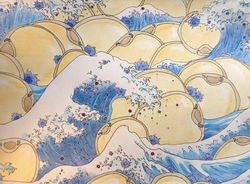 |
|---|
 |
 |
 |
 |
 |
The Alyssa Hasty Lab
We study how obesity impacts health. The growing worldwide obesity epidemic is frequently linked to hyperlipidemia, inflammation, and insulin resistance leading to increased risk of diabetes and cardiovascular disease. The long-term goal of our laboratory is to determine mechanisms by which obesity increases risk for and pathophysiological consequences of these devastating diseases. Macrophages are part of the innate immune system that infiltrate white adipose tissue (fat) in obese rodents and humans, and produce most of the inflammatory cytokines and chemokines secreted from adipose tissue. In addition, their presence has been shown to be temporally associated with the development of insulin resistance. Our current research focus is threefold: to determine mechanisms by which macrophages accumulate in adipose tissue, to determine the role of resident macrophages in normal adipose tissue function, and to determine how other immune cells like eosinophils and T cells also contribute to adipose tissue function.
The artist
Liyan Shen - 2019 AiR Student
I’ve been the president of the illustration club in my high school for three years so I’ve spent a lot of time drawing illustrations, but none of them are related to science. I usually brainstorm and plan exhaustively in my mind for a long time. After that, I make a sketch, revise a little, and finish the drawing. Dealing with scientific topics, I research a lot before brainstorming and also ask for a lot of feedback from my mentor. This process takes more time, but it’s also more interesting and challenging. My works show how the iron-handling abilities of macrophages differ when there are extra iron in lean and obese animals and how macrophages and adipocyte react to the excess iron. Two core concepts are: MFehi macrophages are macrophages with a high iron concentration in adipose tissue, while MFelo macrophages are macrophages with a low iron concentration in adipose tissue. My overall experience has been very great. I talked with very amazing researchers, understood a lot of scientific concepts that I’ve never known before, and challenged myself by converting complex theories to understandable drawings and by continue evaluating my works from the perspective of viewers.
Anna Bright - 2019 AiR Student
As a student studying both neuroscience and art, the Artist-in-Residence program was compelling for undergraduate Anna Bright. Art has always been a principal part of her life; her previous works range from sketches and basic ceramics to commissioned paintings and 14-foot-tall murals. She had never experienced the challenge of portraying a scientific process through art until being introduced to the Hasty lab through the ArtLab/VI4 summer artist-in-residence experience. Dr. Alyssa Hasty studies the role of the immune system in obesity, focusing on the role that M2-like macrophages play in adipose tissue homeostasis. Her research supports that obesity triggers macrophage activity, signaling the immune cells to respond as they would to diseased tissues. This macrophage process inspired the first two of Bright’s projects, one denoting a macrophage in its inactive state and another after its activation. As a macrophage activates, its appendages lengthen and it undergoes other changes that allow it to phagocytose and kill the target; the color change from blue to red represents the conversion of the macrophage from one phase to another. The final piece of her artist-in-residence project is a more abstract rendering of the invasion of adipose tissue by the immune system. This work depicts the differences between healthy and diseased tissue—represented by the conversion from lively colors to monotone hues—and centers on the progression of macrophage response to obese tissues, as portrayed by the change in shape as they activate. The Artist-in Residence program not only gives the research community unique renderings of the processes being studied in an age where standard computerized models are predominant, but also allows students like Anna Bright to explore where her two passions intersect.
Suggested Learning activities
K-5
6-8
9-12